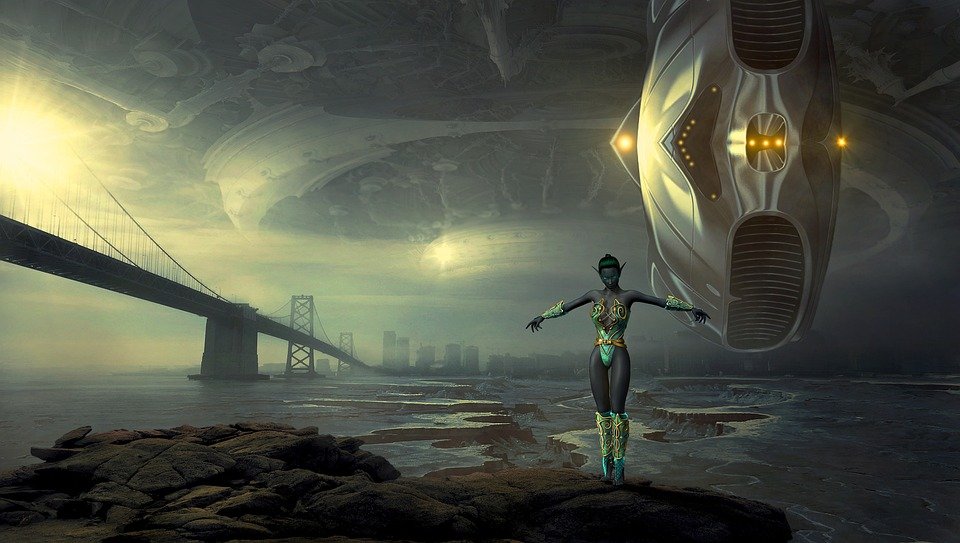Creating Digital Masterpieces: The Secrets Behind NFT Design
Introduction
Non-Fungible Tokens (NFTs) have taken the art world by storm, revolutionizing the way artists create, sell, and distribute their work. NFTs allow artists to tokenize their digital artwork, proving ownership and authenticity, and enabling them to monetize their creations in the digital realm. In this article, we will delve into the secrets behind NFT design and explore the process of creating digital masterpieces that captivate audiences and stand out in the ever-growing NFT marketplace.
The Importance of Storytelling
One of the key secrets to crafting an exceptional NFT design is the power of storytelling. NFTs provide a unique opportunity for artists to tell stories through their artwork. By creating a narrative or conveying a specific message, artists can connect with their audience on a deeper level, evoking emotions and creating a memorable experience.
To effectively incorporate storytelling into NFT design, artists can consider the following:
- Concept: Start by brainstorming ideas and developing a concept or theme for your artwork. This could be inspired by personal experiences, current events, or even abstract concepts.
- Composition: Design your artwork in a way that guides the viewer’s Eye and tells a visual story. Consider the placement of elements, color choices, and the overall flow of the artwork.
- Symbolism: Utilize symbols and metaphors to convey deeper meanings and add layers of interpretation to your artwork. Symbolism can create intrigue and engage viewers in a thought-provoking manner.
- Narrative: Create a backstory or narrative that accompanies your artwork. This could be a written description, a short video, or even an interactive experience that immerses the viewer in the world of your artwork.
Technical Considerations
While storytelling plays a crucial role in NFT design, artists must also pay attention to the technical aspects to ensure the quality and compatibility of their digital masterpieces:
- Resolution: High-resolution artwork is essential to showcase the finer details and ensure optimal viewing experience for collectors. Aim for a resolution of at least 300 DPI (dots per inch).
- File Format: Consider using lossless file formats such as PNG or TIFF to preserve the quality of your artwork. These formats maintain the integrity of the image, preventing any loss of detail or color information.
- Metadata: Include relevant metadata such as title, description, and edition number within the NFT. This information helps collectors understand the artwork’s context and rarity.
- Accessibility: Ensure your artwork is accessible to a wide range of devices and platforms. Optimize your design for different screen sizes and resolutions, and consider compatibility with various NFT marketplaces.
Marketing and Promotion
Creating a stunning NFT design is just the first step towards success in the digital art market. Effective marketing and promotion strategies are vital in attracting potential buyers and collectors. Here are some tips to boost visibility and maximize your NFT’s exposure:
- Online Presence: Establish a strong online presence by creating a portfolio website and engaging with art communities, social media platforms, and NFT-centric forums. Build a network of supporters and fellow artists to expand your reach.
- Collaborations: Collaborate with other artists or influential figures in the NFT space. Joint projects can help cross-promote your work to a wider audience and attract new collectors.
- Storytelling Campaigns: Create engaging storytelling campaigns that reveal the process and inspiration behind your artwork. This can include behind-the-scenes videos, interviews, or interactive experiences that immerse viewers in your creative journey.
- Participate in NFT Events: Take part in online NFT events, auctions, or exhibitions to showcase your work to a targeted audience. These events often attract collectors and enthusiasts who are actively looking for new and exciting NFTs.
FAQs
Q: What is an NFT?
An NFT, or Non-Fungible Token, is a unique digital asset that represents ownership or proof of authenticity of a specific item or piece of content, such as artwork, music, videos, or virtual real estate. Unlike cryptocurrencies like Bitcoin or Ethereum, NFTs are indivisible and cannot be exchanged on a one-to-one basis.
Q: How do I create an NFT?
To create an NFT, you will need to follow these general steps:
- Create a digital wallet that supports NFTs.
- Choose an NFT marketplace where you want to list your artwork.
- Upload your artwork to the marketplace and provide relevant metadata, such as title, description, and edition number.
- Set a price or choose an auction format for your NFT.
- Publish your NFT and promote it to potential buyers.
Q: How can I protect my NFT from plagiarism?
To protect your NFT from plagiarism, consider utilizing blockchain technology, which is the underlying technology behind NFTs. The blockchain provides a decentralized and immutable ledger that records ownership and transactions. Additionally, you can add watermarks or digital signatures to your artwork to discourage unauthorized use or reproduction.
Q: Can I sell a physical artwork as an NFT?
Yes, you can sell physical artwork as an NFT. This process involves creating a digital representation or documentation of the physical artwork, such as high-quality photographs or videos. The NFT then serves as proof of ownership or authenticity of the physical piece.
Q: How do artists monetize their NFTs?
Artists can monetize their NFTs through various means, including direct sales, auctions, royalties, and secondary market transactions. Artists can set a price for their NFTs or participate in auctions where collectors bid for ownership. Additionally, artists can earn royalties from secondary market sales, receiving a percentage whenever their NFT is resold.
Conclusion
Creating digital masterpieces in the form of NFTs requires a combination of artistic talent, technical expertise, and effective storytelling. By incorporating compelling narratives, paying attention to technical considerations, and implementing successful marketing strategies, artists can unlock the full potential of NFTs and thrive in the ever-evolving digital art landscape.

